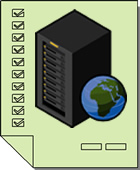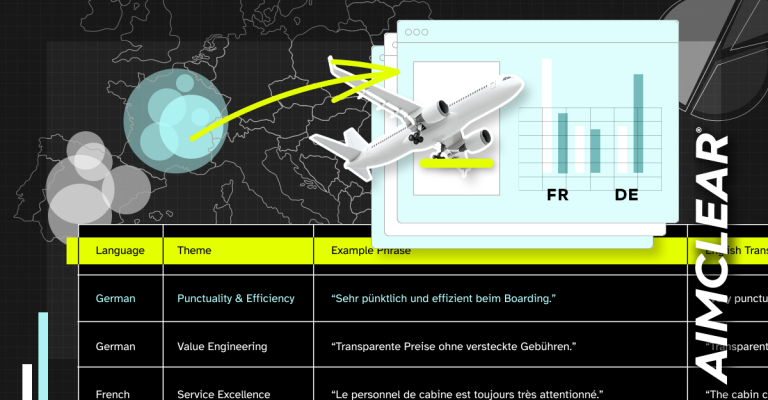
Over time we’ve learned the importance of gaining proper understanding and access credentials, before evaluating sites and/or taking on new clients.
There are many different content management systems (CMS), server models, database programs, maintenance utilities, analytics packages, scheduled reports, programming languages and other variables.
This questionnaire includes an explanation of the technical integration checklist AIMCLEAR uses when welcoming new clients to our system. While we don’t always need all the access credentials listed below, this guide is intended to explain the various types of services-access a company like ours might need, and for what purpose.
FTP
__________________ FTP Username
__________________ FTP Password
__________________ FTP Directory, if applicable
FTP is the “original” content management system (CMS). Dating back to the Web’s foundation, it stands for “File Transfer Protocol,” which means modifying files and synchronizing them between developer/designers’ computers and a web host. This level of access is usually needed to tag sites for analytics, make content modifications, hack CMS back ends, change graphic themes and other.
__________________ Server Model
(Common answers are Linux/Apache/MYSQL, Windows/Apache/MYSQL, Windows, IIS, MSSQL, etc…) This is important information for an your PPC, SEO, social media, company to understand. In addition to a range of available (free and pay) content management systems, plug ins, tools, etc …available for individual server models, the type programmer working on the project is usually defined by the languages, operating systems, databases software, etc… in play.
Many Open Source CMS programs, like WordPress, just don’t play well with IIS–though they can be successfully hacked. On the other hand, there is nobody @ Linux Inc or WordPress.org to take your support call when it all goes to crap. Windows rocks and Windows sucks, depending on the day, and the application. It sure costs a boatload. (Ask me about Google App’s’ in person 🙂 ).
__________________ Programming Languages
What languages, frameworks or other codes are employed in addition to HTML & Javascript (common answers are .php, .asp, server side Javascript, .jsp,, Flash/Action Script, CGI). Like the server model, this is a crucial branch on the integration tree. Understanding how various server and client-side languages are utilized, entwined and hacked from the BEGINNING, can save hours of heartache and teeth gnashing grind.
Pages That Employ Scripts Hosted On Third Party Domains
| __________________ | __________________ | __________________ |
| __________________ | __________________ | __________________ |
| __________________ | __________________ | __________________ |
One way a programmer can work on a site which uses 1 or more foreign coding languages is to use third party/domain scripts to process forms, write to a database, serve up dynamic content or other usages. We’ve come across sites that were absolute mazes of intertwined host pages and processing domains. In addition to taking time to unravel, we’ve seen effectual (and unintentional) link farms created, that seemed to have caused Google smackdowns.
Any Databases?
Of course, databases rule as one of the methods web applications use to achieve, what programmers call, “persistent state.” Whether tables are configured by programs like Drupal, built by your IT department, or set up by default we need to know about them and what they’re used for. Common types are MYSQL, MSSQL, Oracle and MS Access.
| Type | Location | UserName | Password | For What? |
| _______________ | _______________ | _______________ | ________________ | _______________ |
| _______________ | _______________ | _______________ | _______________ | _______________ |
| _______________ | _______________ | _______________ | _______________ | _______________ |
| _______________ | _______________ | _______________ | _______________ | _______________ |
MYPHP ADMIN If Applicable
__________________ Location
__________________ UserName
__________________ Password
MYPHP Admin is a common tool for the Lamp Stack. If you’re running MYSQL, we’d like to have MYPHP admin access if we need it. Often times, DB software is the core of WYSIWYG CMS tools, so having access to the CMS on the DB level often makes it easier to diagnose and solve problems. Also, MYPHP Admin is an appropriate access level for moving sites, setting permissions, etc
Windows Remote Access Server Login
__________________ Location
__________________ UserName
__________________ Password
This type of access allows developers to log into a Windows server to perform administrative functions on the server itself. It’s particularly useful to have in the .asp/VbScript/.aspx/MSSQL environment. It’s great to have access at this level to, any Windows OS Server box.
Content Management Systems OTHER than FTP (Common answers are Drupal, Customer-Built Proprietary CMS (MUCH too common 🙂 , If you can change content on your website from a web browser, you’ve got a CMS. Common types include WordPress, Drupal, Joomla, Pligg, and a multitude of other rock ass (free or inexpensive) CMS app’s’. There’s also ridiculously expensive CMSs, specifically created to serve various niches. Sometimes sites have multiple/hybrid CMSs, such as WordPress hacked on top of traditional FTP.
If you think about it, social communities are actually souped up content management systems as are blogs, auction sites, ecommerce and just about anything else we can think of. Choosing a CMS in the first place is a HUGE decision, often undertaken much too lightly–or imposed on clients by previous SEM vendors without transparency. I could go on and on, ranting about nightmarish CMS systems we’ve run into.
__________________ CMS Login Location
__________________ CMS UserName
__________________ CMS Password
Existing Analytics Packages
These days it’s common to have multiple analytics accounts installed for various purposes. We need to know what baseline data, from activity previous to our involvement, is available for us to turn to for insight. Sometimes we can do forensic analysis on “log files.”
| Type | Location | UserName | Password | For What? |
| _______________ | _______________ | _______________ | ________________ | _______________ |
| _______________ | _______________ | _______________ | _______________ | _______________ |
| _______________ | _______________ | _______________ | _______________ | _______________ |
| _______________ | _______________ | _______________ | _______________ | _______________ |
Common answers include Google Analytics, Google AdWords Conversion Tracking, ClickTracks, Enquisite, ClickPath, Index Tools, WebTrends etc …Often times web hosts offer free log analysis “stats” pages. These are most often Web1.0 packages that provide some insight. It’s important to note the difference between log analysis tools and Javascript page tagging analytics. Read more about the difference between page tagging and log file analytics here.
__________________ Directory where Web Log Files are kept (We may ask your server administrator to enable cookie tracking, if we need to analyze log files. The most common reasons we need access to log files is to run a robots report or historic prior to our involvement in a project with no or limited existing historical data.
Adwords, AdCenter, Facebook, Panama, Other PPC Accounts
| Type | Location | UserName | Password |
| _______________ | _______________ | _______________ | ________________ |
| _______________ | _______________ | _______________ | _______________ |
| _______________ | _______________ | _______________ | _______________ |
| _______________ | _______________ | _______________ | _______________ |
Feedburner Login
Feedburner is a Google property that tens of millions of site owners use to track RSS feed subscriptions for free. While Feedburner provides a lot of valuable insight, it also gives Google yet another way to judge the importance of your website. If your company does not have an RSS feed and a plan to publish by feed, then strongly consider it. We want access to view your progress, diagnose trouble, view feed analytics, etc…
__________________ Feedburner Fees Address (feeds.feedburner.com/myFeed)
__________________ Password
__________________ User Name
Host Contact Information
Please contact your web host/server administrator and authorize AIMCLEAR to interact on behalf of your account. We may need this credential for any number of reasons. Trust me, you’ll be glad not to be called upon as an intermediary for routine stuff or when the shit hits the fan.
__________________ Host Company Name
__________________ Host Account Number
__________________ Host Phone Number
__________________ Host Website
__________________ Host Account Login URL
__________________ Host User Name
__________________ Host Password
__________________ Host Account Rep
__________________ Host Support Email
301 Redirects (Please provide as attached spreadsheet of any current 301s if applicable). 301 redirect are a method to let users and search engines know when/where pages change URLs within a website. It’s an essential function as it also “transfers” the authority of any inbound links.
In a mature site, it is common to have 301s (or even multiple layers) from previous CMS migrations or redirects of retired pages. We need to know about this.
Reports Your Receive Regularly
If you are used to receiving reports, set up yourself or emailed from previous/existing SEM vendors, please provide us copies of them . Much of the time they’re auto-generated from Google or other services. We need to know what you’re used to seeing so we can evaluate and provide seamless services. Please attach 1 example of each report.
In Conclusion
It’s true, we don’t need all of these access points for every account we deal with. That said, gathering the information ahead of time sure saves piles of time when bodies are flying. To our mind, organizing this information and having it at our fingertips as we move through exciting challenges associated with growing an SEM account, can be a serious time saver.
We need to understand how your site is wired, how things are measured and gain quick access as needed. We hope this list is useful to both SEM vendors and clients alike.








